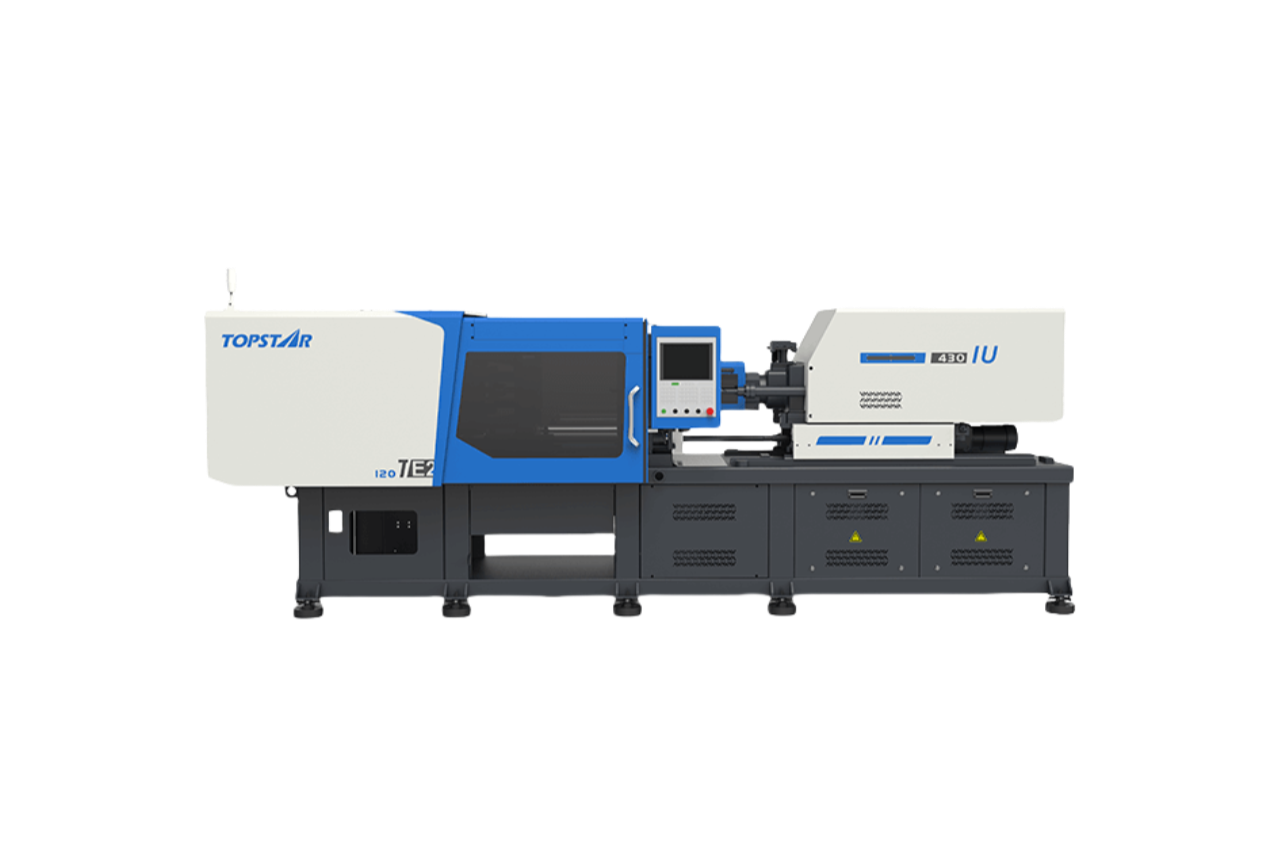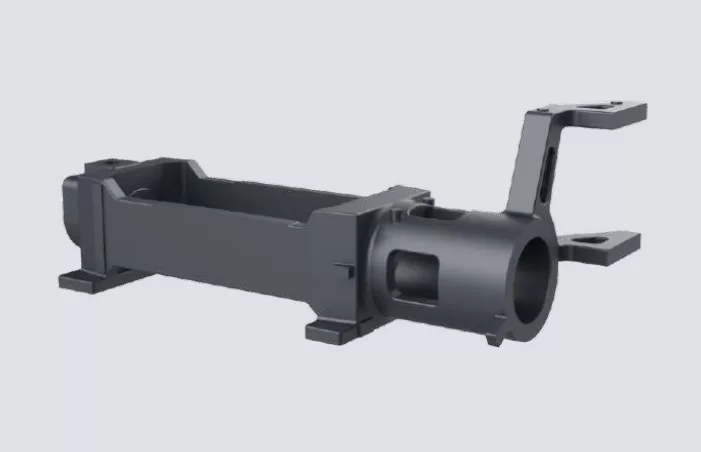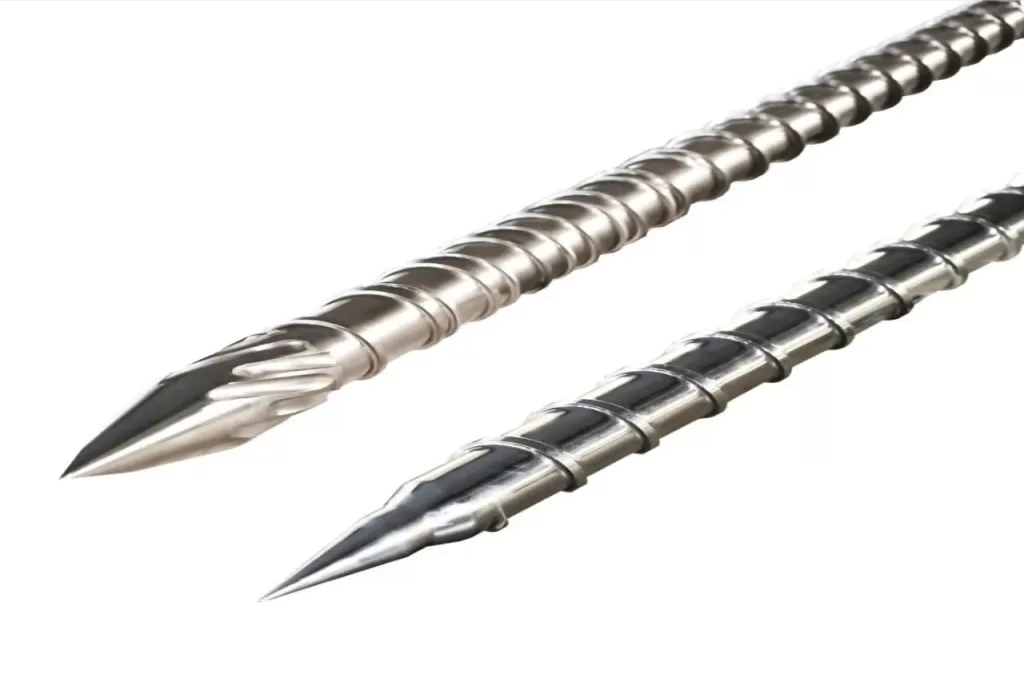Diagnosing Inconsistent Shot Weights in an All Electric Injection Molding Machine
2025/06/11 By Topstar

Unlike hydraulic machines, where pressure variations and fluid compressibility can cause inconsistencies, all electric injection molding machine utilize servo motors and precision ball screw mechanisms to meter polymers. However, even these energy-efficient injection molding machines can experience shot weight fluctuations due to mechanical, thermal, or control-related factors. So we need to diagnose and eliminate the root causes of shot weight inconsistencies through maintenance practices in terms of mechanical stiffness, servo control parameters, thermal stability, screw/barrel condition, sensors, etc., to maximize the performance and reliability of electric machines.
Mechanical Rigidity and Integrated Injection Seats
To assess whether mechanical clearance is causing shot weight variation, first visually inspect the injection unit for signs of frame bending or mounting bolt displacement. Then use a dial gauge to measure any lateral movement of the barrel or screw assembly when subjected to the nominal injection force. Even sub-millimeter deflection can alter the effective screw stroke, leading to shot size variation. Therefore, it is necessary to confirm the integrity of the injection seat and tighten or readjust the structure as needed to ensure that the mechanical foundation of the energy-efficient injection molding machine remains rock solid, which directly translates into repeatable shot metering. Additionally, Topstar’s all electric injection molding machine features a structurally integrated injection seat with high rigidity and a stable frame. This design minimizes deflection under high injection pressure and maintains perfect alignment between the servo-driven screw and the barrel.

Discrete intelligent drive for all electric injection molding machine for precise injection control
Discrete intelligent drives provide precise real-time motion control to maintain stable injection weight. They can assign control tasks directly to the servo drives of each axis, enabling local calculation of motion profiles. This architecture eliminates latency in the central controller and significantly reduces communication latency, ensuring that the injection screw follows its programmed trajectory with microsecond accuracy.
To diagnose control-related injection weight changes, check the drive log: Discrete intelligent drives record the torque, position, and speed of each axis at high resolution. Look for deviations in the acceleration and deceleration phases of the screw, as these may alter the metering volume. If differences occur, adjust the drive’s motion parameters, such as impact limits or profile tracking settings, which can fine-tune the transition between acceleration and steady-state speed. Properly configured discrete smart drives respond quickly when melting viscosity changes or backpressure spikes occur and instantly compensate to maintain shot weight accuracy.

Thermal Stability and Temperature Uniformity
Temperature fluctuations in the barrel or mold can significantly affect polymer viscosity, directly affecting the amount of material delivered by the screw per cycle. On all electric injection molding machines, it is critical to keep the barrel area within ±1°C of the set point. Use infrared thermal imaging or embedded thermocouples to map temperature uniformity along the barrel’s length, particularly around the heating bands and cooling water channels. Identify any cold spots or hot zones due to heater overlap.
Next, verify the performance of the mold temperature controller by ensuring that the mold surface reaches the set point without overshoot and that the coolant flow is balanced across all cavities. When poor thermal management occurs, it often leads to phase change dynamics, which alter the melt density, resulting in slight shot weight drift. Finally, by stabilizing barrel and mold temperatures, you can lock in a consistent polymer viscosity profile, allowing your electric injection molding machine to meter the same shot weight every time.
Screw and Barrel Wear on All Electric Injection Molding Machine
Mechanical wear between the screw threads and the barrel bore is another common cause of inconsistent shot weights. Even doubling the nominal clearance can result in significant meltbackflow during the injection and holding phases. To diagnose this problem, remove the screw from the barrel for inspection: clean any polymer residue, then use a micrometer to measure the thread thickness at multiple axial points and compare the readings to the original design drawing. Similarly, measure the barrel’s ID with a bore micrometer to detect uneven wear or taper. If wear exceeds the wear limit, the barrel should be re-bored or the screw refurbished. Maintaining a tight screw-to-barrel clearance ensures volumetric efficiency, allowing every rotation of the servo motor to translate into a precise increment of molten resin pushed forward, thereby maintaining consistent shot weights on energy-efficient electric platforms.

Sensor Health and Signal Integrity
Accurate shot-size metering also depends on reliable feedback from position and pressure sensors. On electric injection molding machines, linear encoders track screw positions with micron-level accuracy, while pressure sensors monitor injection and holding pressures in real-time. To diagnose sensor-driven inconsistencies, first, verify encoder performance by disconnecting the feedback loop and manually rotating the screw shaft to confirm that the reading matches the mechanical motion. For pressure sensors, calibrate them against a certified pressure gauge at multiple set points to ensure that they operate linearly over the entire pressure range of the machine. Loose wiring, connector corrosion, or electrical noise can introduce stray readings, causing the controller to misjudge the end of filling and change the injection weight. By confirming the health and signal integrity of the sensor, you can maintain the high-precision operation of the all electric injection molding machine.
Get consistent injection weight.
Inconsistent injection weight involves addressing multiple interrelated factors, including mechanical stiffness, servo control adjustments, thermal management, screw/barrel gaps, and data-driven troubleshooting. We can perform structural inspections, servo adjustments, and temperature uniformity checks to restore and maintain consistency for each injection gradually. At the same time, the high-rigidity integrated injection seat on Topstar’s all-electric injection molding machine also provides a solid mechanical foundation, and discrete intelligent drive and sensor feedback give the required accuracy and reliability.
TRENDING POSTS
- TOPSTAR Global Open Day 2025: Humanoid Robot Debuts, Pioneering a New Decade of Intelligent Manufacturing 2025/06/11
- Topstar Showcases TE II Electric Injection Molding Machines at InterPlas Thailand 2025 2025/06/11
- Topstar Expands Its Ecosystem Partnerships to Drive Smart Manufacturing Innovation 2025/06/11
- What factors can cause delays in the injection molding process of plastic molding machine? 2025/06/11
HOT TOPIC
- .ervo motor-driven linear robots
- •
- 1.0 guangdong topstar technology co. ltd
- 1.0 topstar china
- 1.0 topstar robot
- 11
- 160℃ mold temperature controller
- 170 ton injection molding machine
- 2
- 21
- 220-ton injection molding machine
- 23
- 3 axis robot
- 3 axis robots
- 3 in 1 Compact Dehumidifying Dryer
- 3-axis robot
- 3-axis robots
- 39
- 41
- 460T injection molding machine
- 5-axis CNC machine
- 62
- 90 ton injection molding machine
- accuracy
- Air Chillers
- all electric injection molding machine
- all electric injection molding machines
- all-electric injection molding machine
- All-electric injection molding machines
- and overall production quality. Therefore
- AP-RubberPlas
- automated injection molding machine
- Automation changed engineering
- automation of injection molding robots
- automotive parts injection molding
- auxiliary machine
- Bench Injection Molding Machine
- Cabinet dryer manufacturers
- Cabinet dryers
- chiller
- CNC Drilling Machine
- CNC Drilling Machines
- cnc engraving machine manufacturer
- cnc laser cutting machine manufacturer
- CNC machine
- CNC Machine Center
- CNC Machine for Sale
- CNC Machine Manufacturing
- CNC Machine Tool
- CNC machine tool product
- CNC Machining Center
- CNC wood carving machine
- Cooling system
- Cross-Walking Single Axis Servo Cylinder Robot
- Cross-Walking Single-Axis Servo Cylinder Robot
- Cross-Walking Three-Axis/Five-Axis Servo Driven Robot
- cross-walking three-axis/five-axis servo-driven robot
- Dehumidifier Dryer
- Dehumidifying Dryer
- delta parallel robot
- Desktop Injection Molding Machine
- Desktop injection molding machines
- Desktop Molding Machine
- desktop plastic injection machine
- Desktop Plastic Injection Molding Machine
- Digital Transformation
- direct clamp injection molding machine
- Direct clamp injection molding machines
- Dosing & mixing system
- Drilling Centers
- Drying and dehumidification system
- drying and dehumidifying equipment
- Drying and Dehumidifying System
- drying system
- effective and efficient. Cabinet dryers are also used in other industries where large quantities of material need to be dried
- efficient injection molding machine
- elbow hydraulic injection molding machines
- electric injection molding machine
- electric injection molding machines
- energy-efficient injection molding robot
- energy-efficient water chiller
- energy-efficient water chillers
- energy-saving injection molding machine
- etc. Among injection molding robots
- exhibition
- features of CNC machine
- Feeding And Conveying System
- Five Axis Machine Center
- Flexible Production Line
- Fully automatic injection molding machine
- Gathering Topstar
- giant injection molding machine
- GMU-600 5-Axis Machining Center
- Granulating & Recycling System
- Heavy duty injection molding machine
- High-precision electric molding machines
- high-precision plastic molding machines
- high-speed all electric injection molding machine
- high-speed electric injection molding machine
- High-Speed Packaging Injection Molding
- Honeycomb rotor dehumidifier
- horizontal injection molding machine
- Horizontal Injection Molding Machines
- Horizontal Injection Moulding Machine
- Horizontal Mixer manufacturer
- How The CNC Machine Works
- hybrid injection molding machine
- hydraulic injection molding machine
- Hydraulic Injection Molding Machines
- in this article
- Industrial AI
- Industrial Automation
- Industrial robot
- Industrial Robot Chinese brand
- industrial robot parts
- industrial robot supplier
- Industrial robots
- Industry Chain
- Injection Manipulator
- injection manipulator robot
- injection mold machines
- Injection molding
- Injection molding automation
- Injection Molding Automation Solution
- injection molding dryer
- Injection molding equipment
- injection molding hopper dryer
- Injection molding machine
- injection molding machine brand
- Injection Molding Machine Factory
- Injection Molding Machine Manufacture
- Injection molding machine manufacturer
- injection molding machine manufacturers
- Injection molding machine procurement
- injection molding machine robotic arm
- injection molding machine with a robot
- Injection molding machines
- injection molding material dehumidifying
- injection molding plant
- injection molding process
- Injection Molding Robot
- injection molding robot arm
- Injection molding robot automation
- Injection molding robotic arm
- injection molding robots
- Injection moulding machine
- injection moulding machines
- Injection Moulding Robots
- Injection Robot
- Injection robot arm
- Injection robot manufacturer
- Injection robot wholesale
- injection robots
- Intelligent Factory
- intelligent injection molding machines
- Intelligent Manufacturing
- intelligent mold temperature
- intelligent mold temperature controller
- Intelligent mould temperature controller
- InterPlas Thailand 2025
- Introducing Injection Robot
- It is the best choice for drying large quantities of material at once. Cabinetmakers use these machines because they are fast
- Large flow water type mold temperature controller
- large injection molding machine
- large injection molding machines
- Learn what industrial automation and robotics is
- linear robot
- linear robots
- low speed sound-proof granulator
- machine plastic molding
- make sure to add some! Improvements (2) Keyphrase in introduction: Your keyphrase or its synonyms appear in the first paragraph of the copy
- manipulator machine
- manufacturing
- Manufacturing Innovation
- medical grade injection molding machines
- Medical Injection Molding
- medical injection molding machine
- medical injection molding machines
- micro injection molding machine
- middle speed granulator
- Mini CNC machine manufacturers.
- mobile cover making machine
- Mold Temperature Control System
- mold temperature controller
- mold temperature controllers
- molding machine
- molding material Dehumidifying System
- mould temperature control system
- mould temperature controller
- mould temperature controllers
- New electric injection molding machine
- nitrogen dryer manufacturer
- nitrogen dryer system manufacturer
- Oil type mold temperature controller
- Oil type mold temperature controllers
- open day
- optical component injection molding
- Outbound links: No outbound links appear in this page. Add some! Images: No images appear on this page. Add some! Internal links: No internal links appear in this page
- packaging injection molding
- Packaging Solutions
- PET Preform injection molding
- phone case maker machine
- phone case making machine
- phone cover making machine
- PID Control Mold Temperature Controller
- plastic bottle making machine
- plastic bottle manufacturing
- plastic bucket making machine
- plastic bucket manufacturing
- Plastic chair making machine
- plastic forming equipment
- plastic hopper dryer
- plastic injection machine
- plastic injection machines
- plastic injection molding
- Plastic injection molding equipment
- Plastic injection molding machine
- Plastic Injection Molding Machines
- plastic injection moulding machine
- plastic injection moulding machines
- plastic injection robot
- plastic molding
- Plastic Molding Industry
- Plastic Molding machine
- plastic molding machine 1
- Plastic Molding Machines
- plastic molding press
- plastic moulding machine
- plastic phone case making machine
- plastic-molding machine
- powerful granulator
- Powerful Type Sound-Proof Granulator
- precision injection molding
- precision injection molding machines
- production of plastic seats
- pure water mould temperature controller
- Robot injection molding
- robot injection molding machine
- robot manufacturing companies
- Robotic arm for injection molding machine
- robotic injection molding machines
- robotics in injection molding
- SCARA robot
- SCARA robots
- Service-oriented manufacturing
- Servo Cylinder Robot
- servo driven robot
- Servo Driven Robots
- servo injection molding machine
- servo injection robots
- servo motor-driven linear robots
- servo-driven 3-axis robot
- Servo-driven injection molding machine
- Servo-Driven Robot
- Setup of injection machine
- Silicone Injection Molding Machine
- six-axis industrial robot
- Smart Manufacturing
- Stainless Hopper Dryer
- Stainless Hopper Dryers
- star club
- swing arm robot
- take-out robot
- take-out robots
- Thailand 4.0
- the choice between servo-driven robots and hydraulic robots will have a certain impact on efficiency
- the most popular injection molding machine
- the type of injection molding robot
- TIC2000 Control System
- TMII injection molding machine
- toggle clamp injection molding machine
- Toggle Hydraulic Injection Molding Machines
- toggle injection molding machine
- Top 10 brands of injection robots
- Topstar
- Topstar Electric Injection Molding Machine InterPlas Thailand 2025 Smart Manufacturing Thailand 4.0
- Topstar Engineering
- Topstar Industrial Robots
- Topstar injection molding intelligent
- Topstar Scara Robots
- Useful Injection molding machine
- Vertical machining centers
- volumetric type blender
- water chiller
- water chillers
- water distributor
- water type mold temperature controller
- Water Type MoldTemperature Controller
- Water-Type Mould Temperature Controllers
- We often face choices when performing injection molding. We will choose the type of injection molding machine
- wholesale of injection molding machines
- x carve CNC
- 热门查询 点击次数 展示 排名 topstar
